Today was the first day of total demography! Team Echinacea started as a whole group at Tower, a remnant prairie site, where Jared gave an overview of total demography. Team Echinacea learned important skills such as communication and collaboration. After total demography was finished at Tower, one group headed to Martinson Approach and another went to East of Town Hall. Echinacea angustifolia pollen has seemed to wind down in the past few days. Today, Grace and Rebecca collected the remaining pollen from the last flowering plants. In the afternoon, everyone had personal project time!
|
||||
|
Today we welcomed goats to Hjelm. They are already hard at work eating their way through the foliage. Keep up the good work, goats! Most of the humans worked on finishing searching for Stipa in p01 and started planting a new production garden to generate seed to add to the experimental plots. Ian and Liam valiantly continued staking points for the pollinator emergence study. Wyatt and Abby are getting ready to begin a study investigating the effects of fire on pollen and nectar production in Echinacea angustifolia. This project has many excellent collaborators and is part of the MN ENTRF funded research on prescribed fire and ground nesting bees.  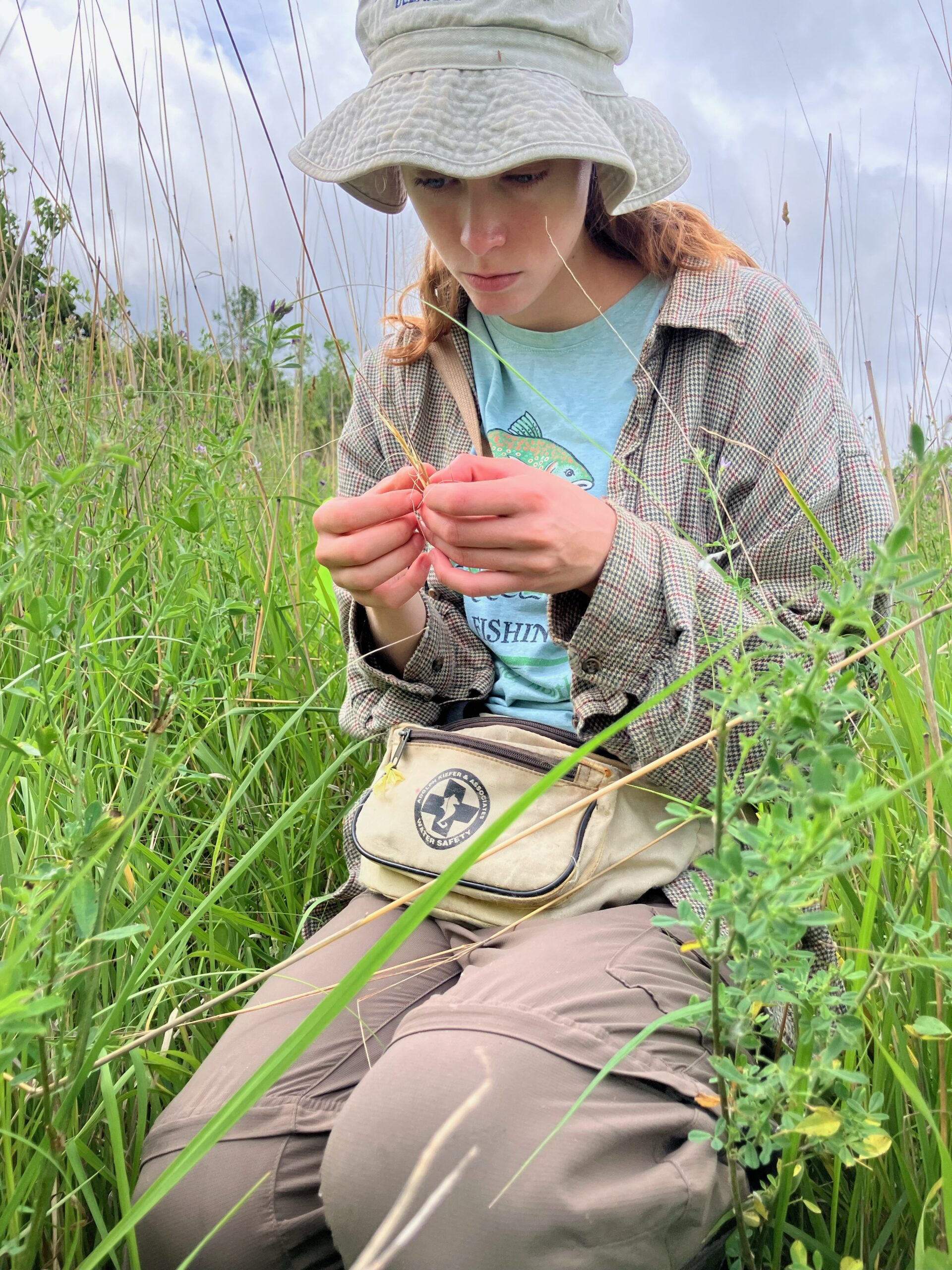 I am a high school science teacher from La Salle High School in Yakima, Washington. Before I was a teacher, I was an ecologist studying plant communities in savanna landscapes. At La Salle, our campus contains nine acres of restored riparian habitat that we manage in partnership with the Yakama Tribal Fisheries Project. My goal this summer is to participate in and learn from Echinacea Project’s ongoing activities and to develop a long-term research project to bring home for science students at La Salle. 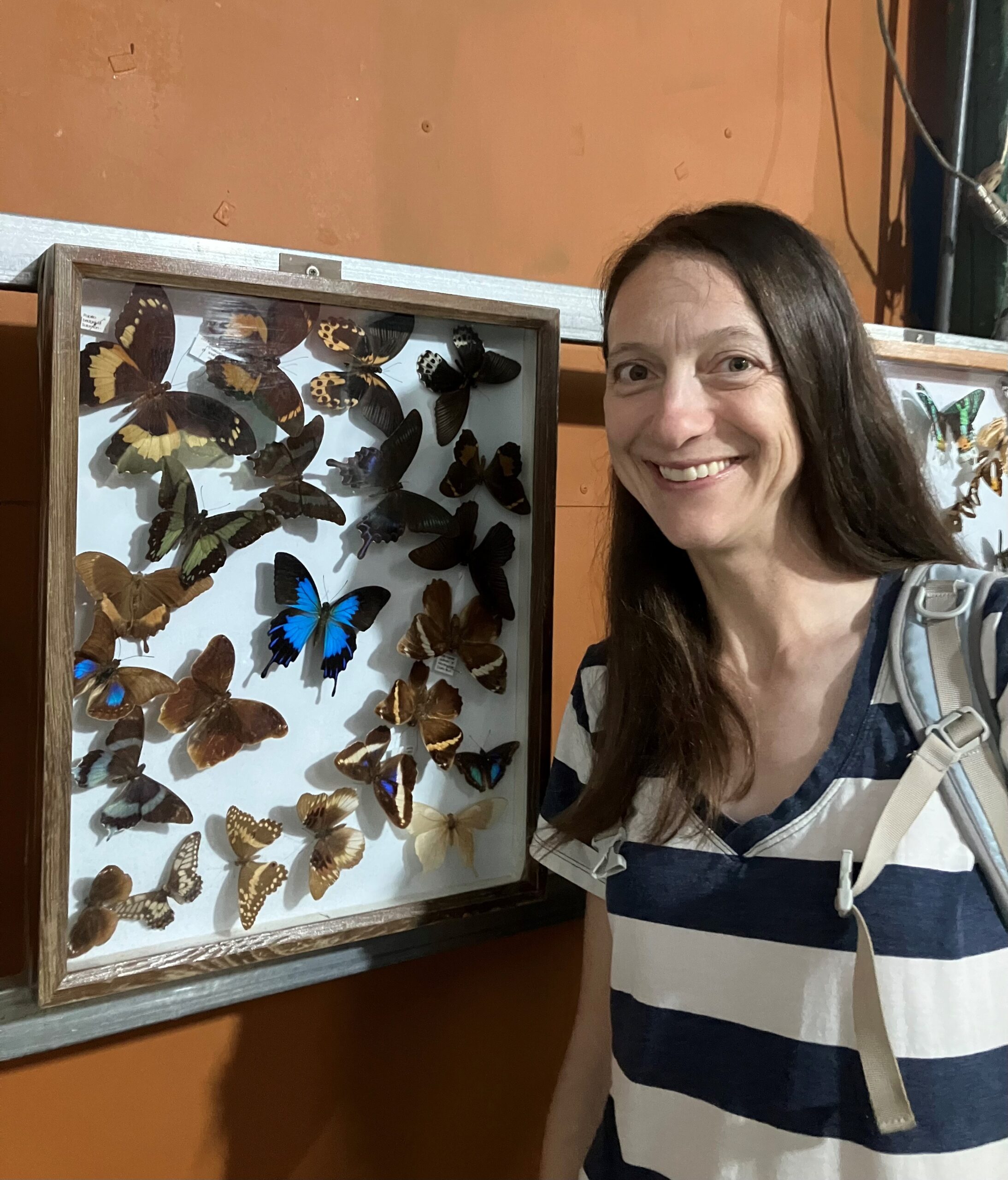 Today the team conducted the second day of Stipa search. This time we came back to know points with Stipa plants using our visor and confirmed if a plant was present. The team learned how to differentiate basal Stipa plants from other grasses in the plot and confirmed the presence of many Stipa grasses that weren’t logged during our first day of Stipa search. In the afternoon the team worked on staking more BB points and collecting/setting up more emergence traps. Today the team went out to Hegg Lake to flag flowering echinacea along with decapitating some pallida. We were joined by collaborators from NDSU who collected pallida samples for pollen and nectar studies. It was the first day of taking demographics of the echinacea this season. Taking the demographics went well and we estimated finding anywhere between 80 to 300 flowering echinacea pallida. Later in the afternoon the team split up to work on independent projects. Including, shooting bb points with the gps, working on proposals, and flagging more echinacea. 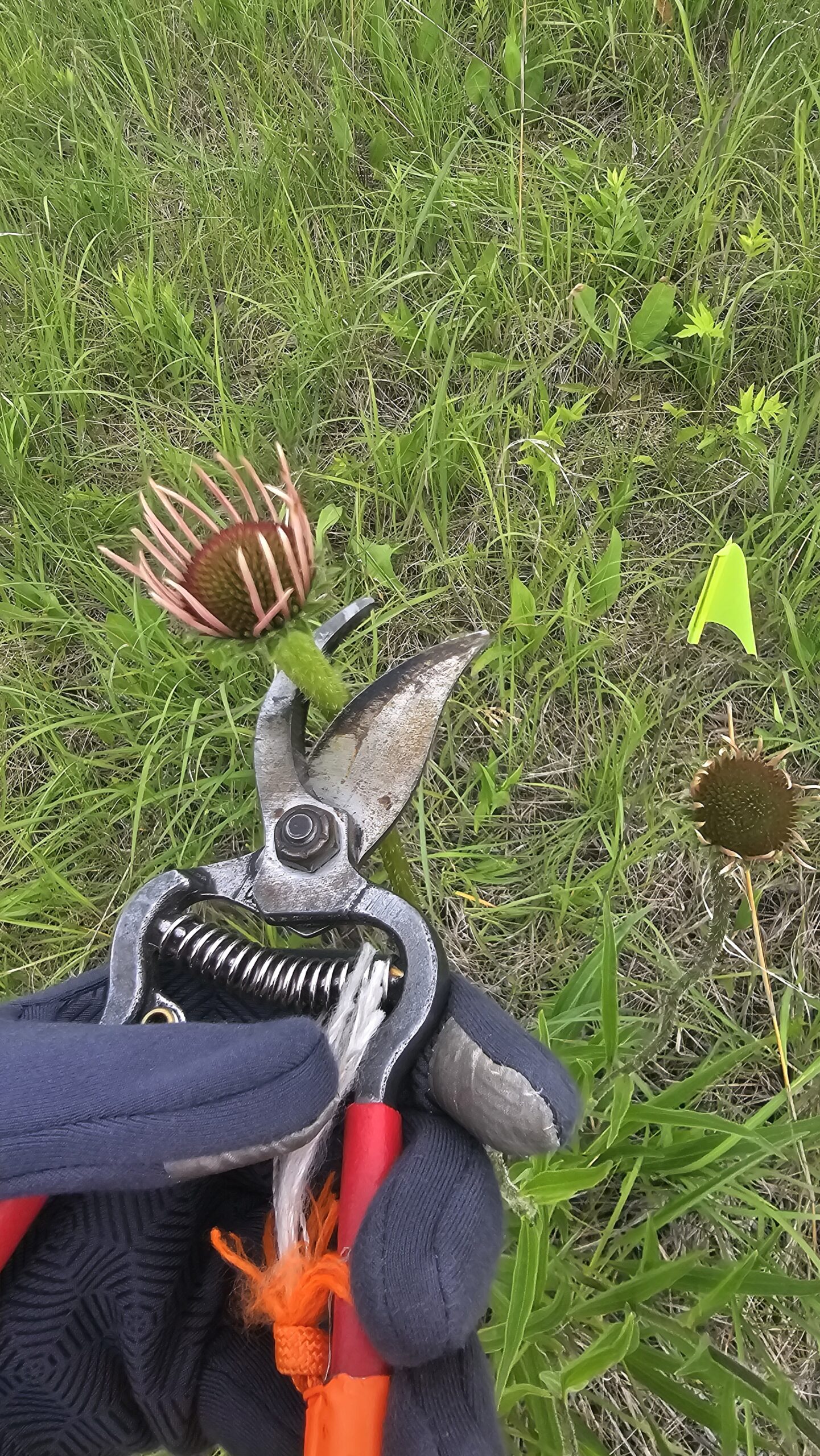 Today the team learned about Hesperostipa spartea (Stipa) which is affectionately known as porcupine grass. After reviewing the protocol for collection, we made our way down to experimental plot p01 where we received a lesson on identifying flowering Stipa and counting the fruits (imagine a long seed with a tail). We documented the number of culms (stems) and fruits as well as missing fruit in our field notes. This was only the first step but the information collected will help determine how the fitness – an organisms ability to survive and reproduce in an ecosystem – of Stipa grown in experimental plots differs from Stipa growing in prairie remnants. 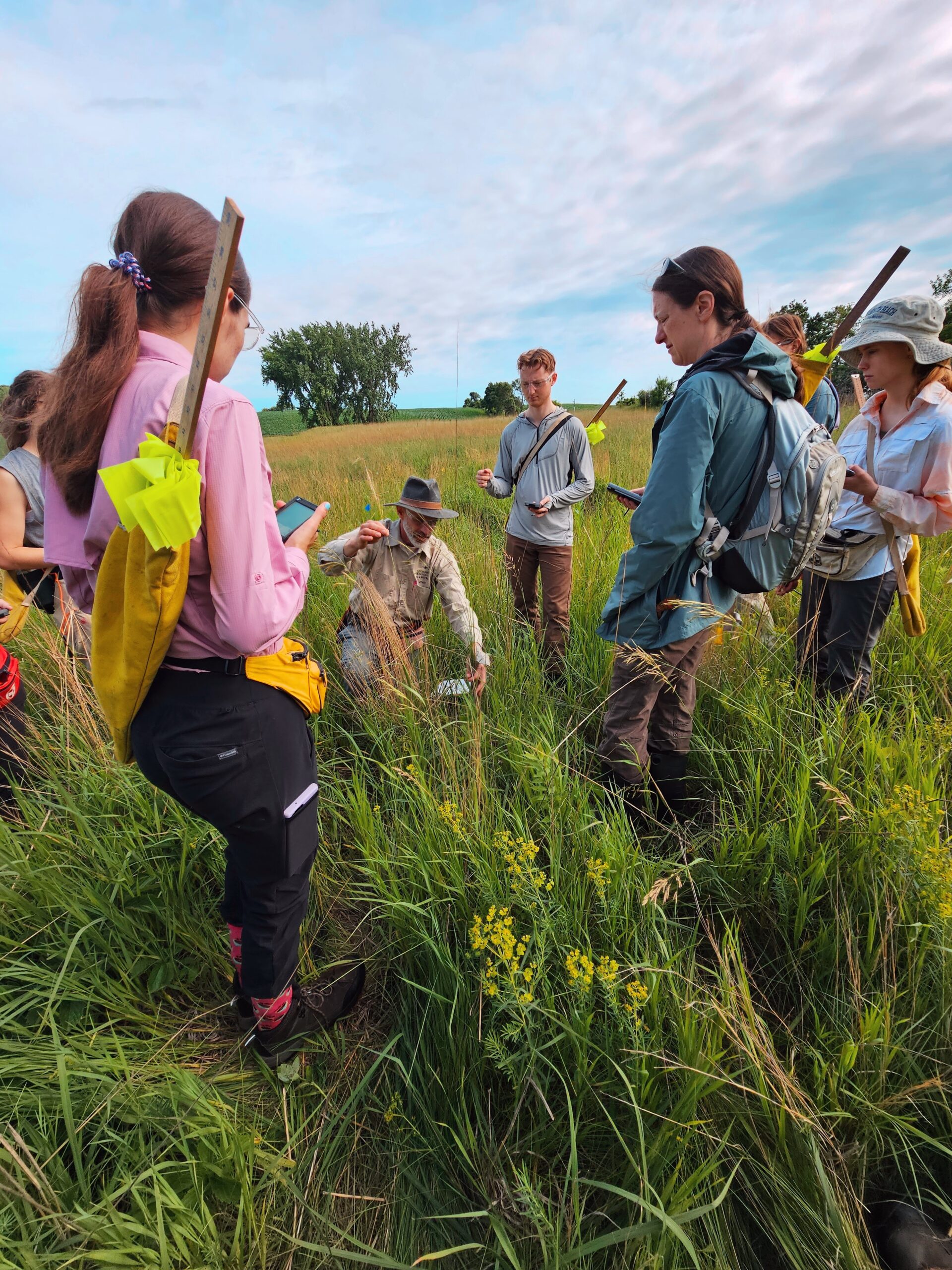 Later that afternoon, a small team retrieved and deployed emergence traps. The contents of the traps were examined and the specimens were prepared for classification. 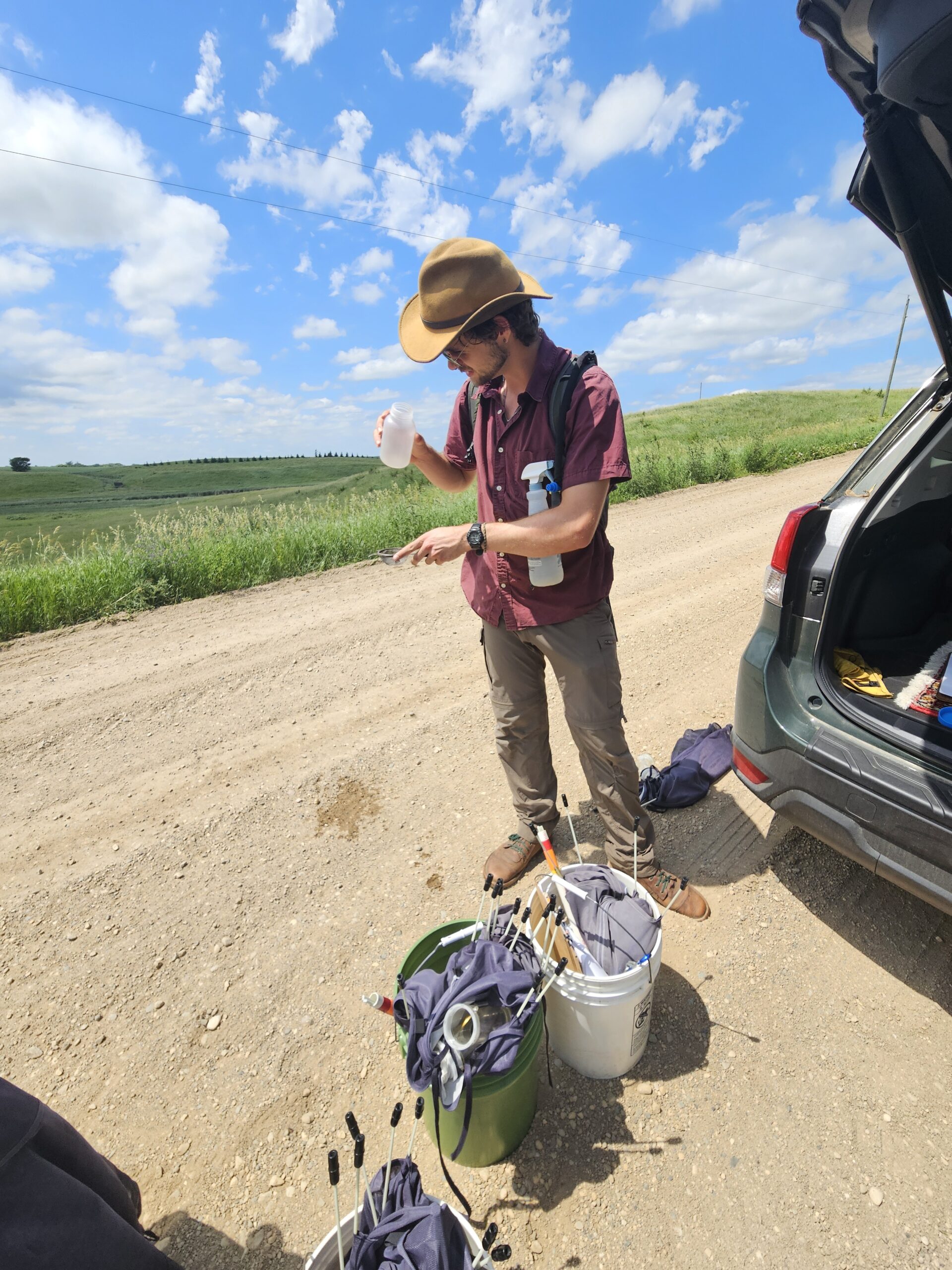 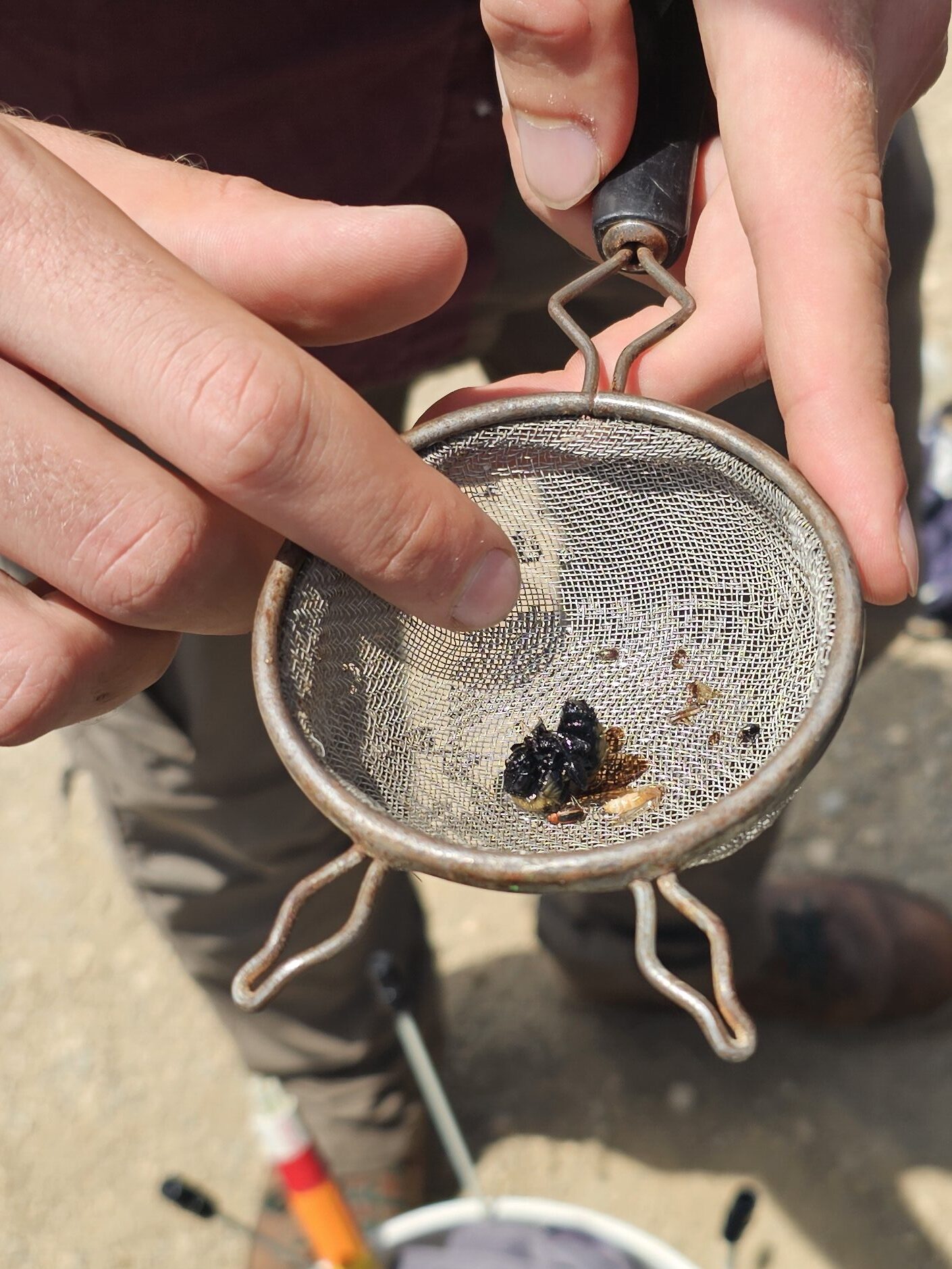 Today was a busy Friday full of many activities! It is officially the first day of summer! Ning, Liam, and Maddie worked in P1 today fixing flags that might be out of place or not in line and also putting signs for positions so it is easier to know where you are. They also checked the flags in the 99 garden. Zach and Emma headed out to P8, where they watered the prairie turnips planted yesterday and planted extra plants. An interesting thing they noticed was that the prairie turnips seemed eaten across the first 3 rows. The team hypothesized that it might be hungry rodent. Ian helped Elise learn how to use the GPS and how to shoot some BB points. At lunch, the team had a discussion about their ABTs (And, But, So), which are goals for what each person wants to research or study further this year. There were many great ideas and lots of feedback in our discussion. In the afternoon, Liam and Zach shot some more BB points. Ian, Maddie, Elise, and Emma and placed some more emergence traps! 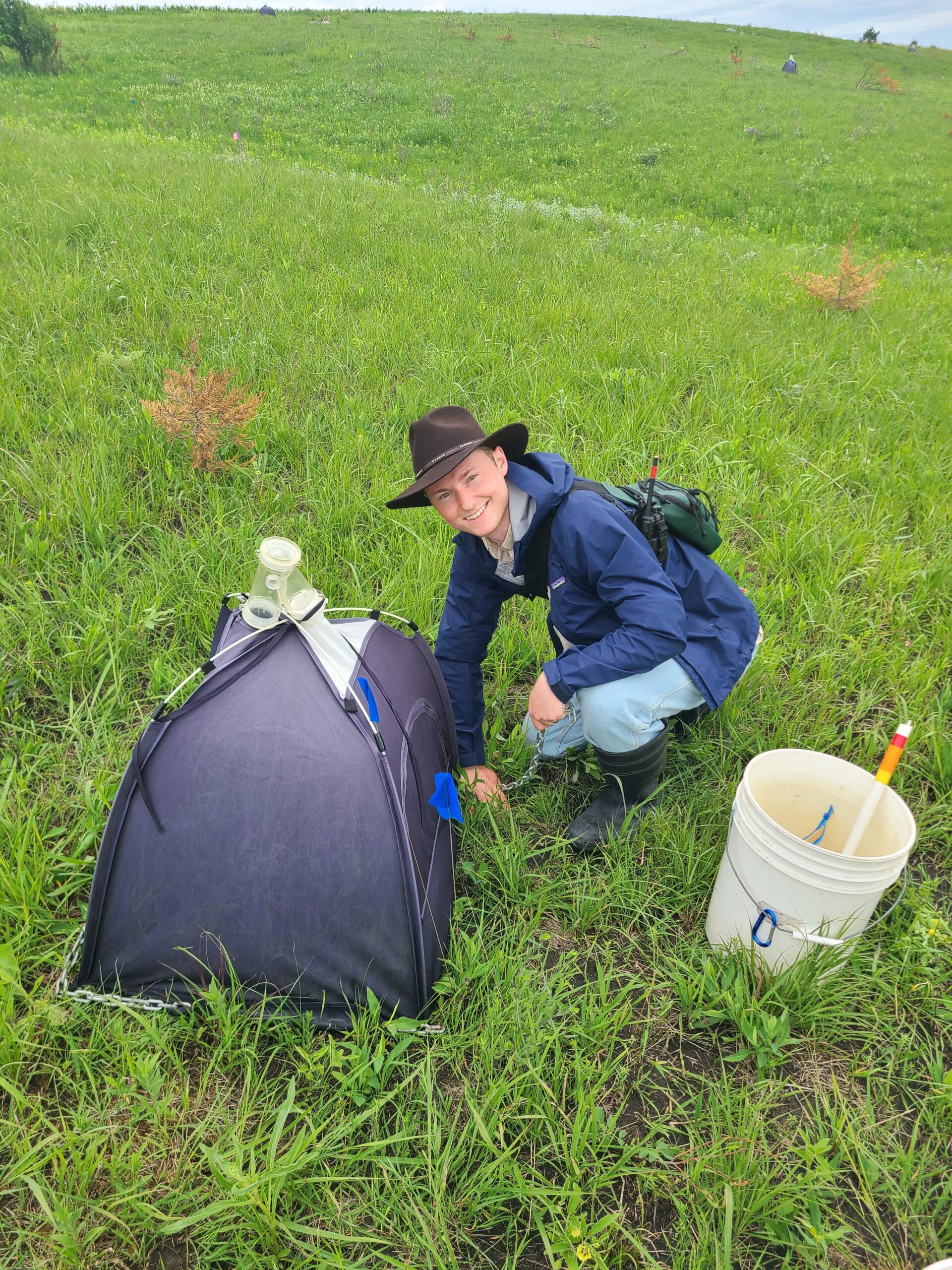 Zach with an emergence trap placed yesterday(6/20/2024)
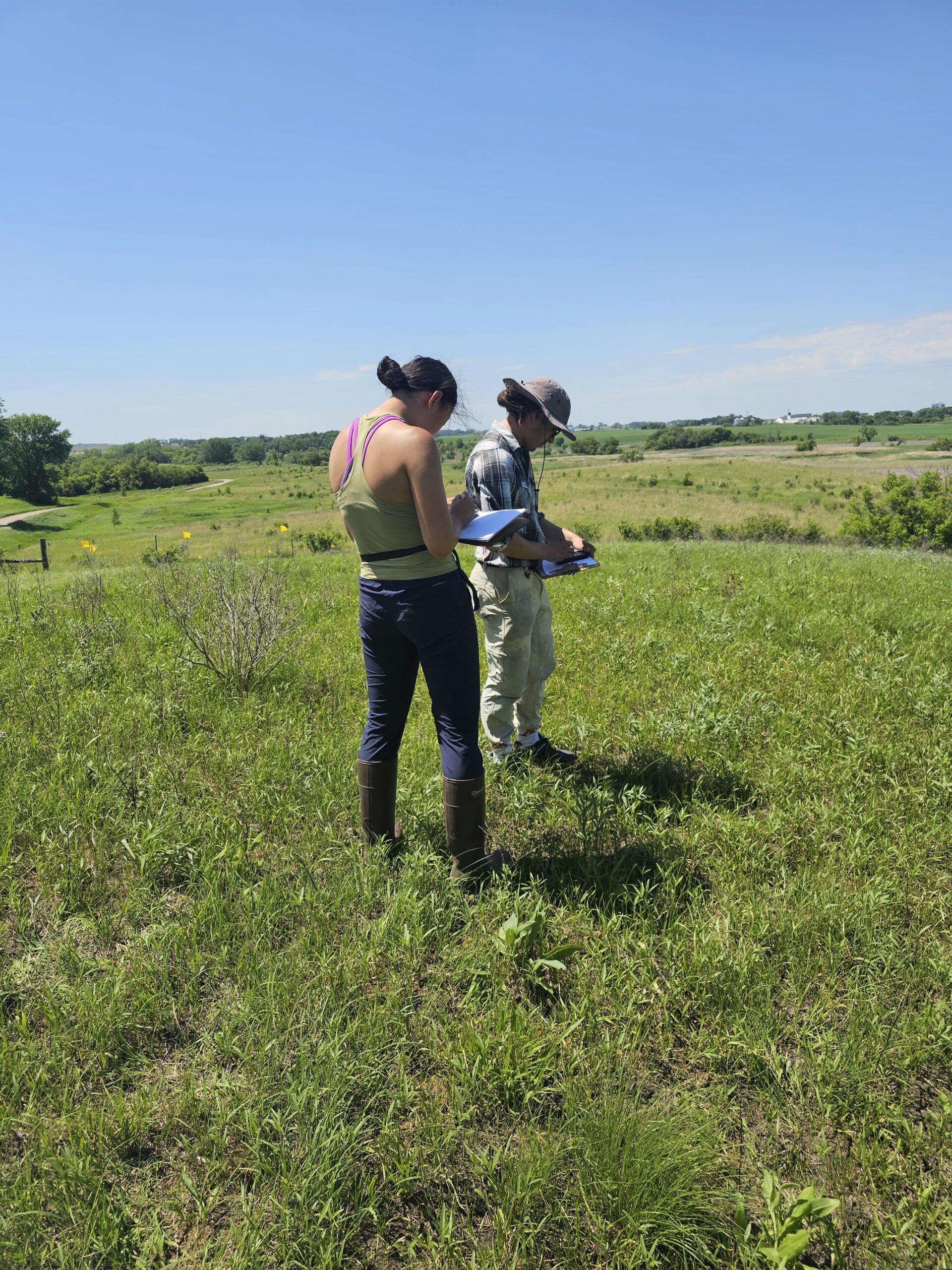 For our first day we did direct observations with the goal of practicing your observational skills along with plant ID for our four plant groups of focus: C3 grasses, C4 grasses, legumes, and forbs. The group I was placed in looked at sites ALF East and ALF West. ALF West was our first stop. This site featured a fence line and natural hills that has been cut through by a gravel road. The site consisted mainly of C3 grasses. In the ditch and closer to the road we were able to see a handful of different legume and forb species, but the site lacked diversity in general. Due to this lack of diversity and over taking of C3 grasses the site appears to have not had a prescribed fire for a few years. Fortunately, we were able to see some emerging coneflower which is always exciting! ALF East was very different in diversity in comparison to ALF West. Based on visual observations diversity was a lot higher and most of the plant species found belonged in the legume and forb plant groups. With diversity being so much higher, and the plot featuring several plants that have appeared to have been scorched by fire it was our assumption that ALF West had experienced prescribed fire in recent years. The landscape of ALF West not too visually different other than it featuring a corn field behind the prairie area unlike on ALF East. 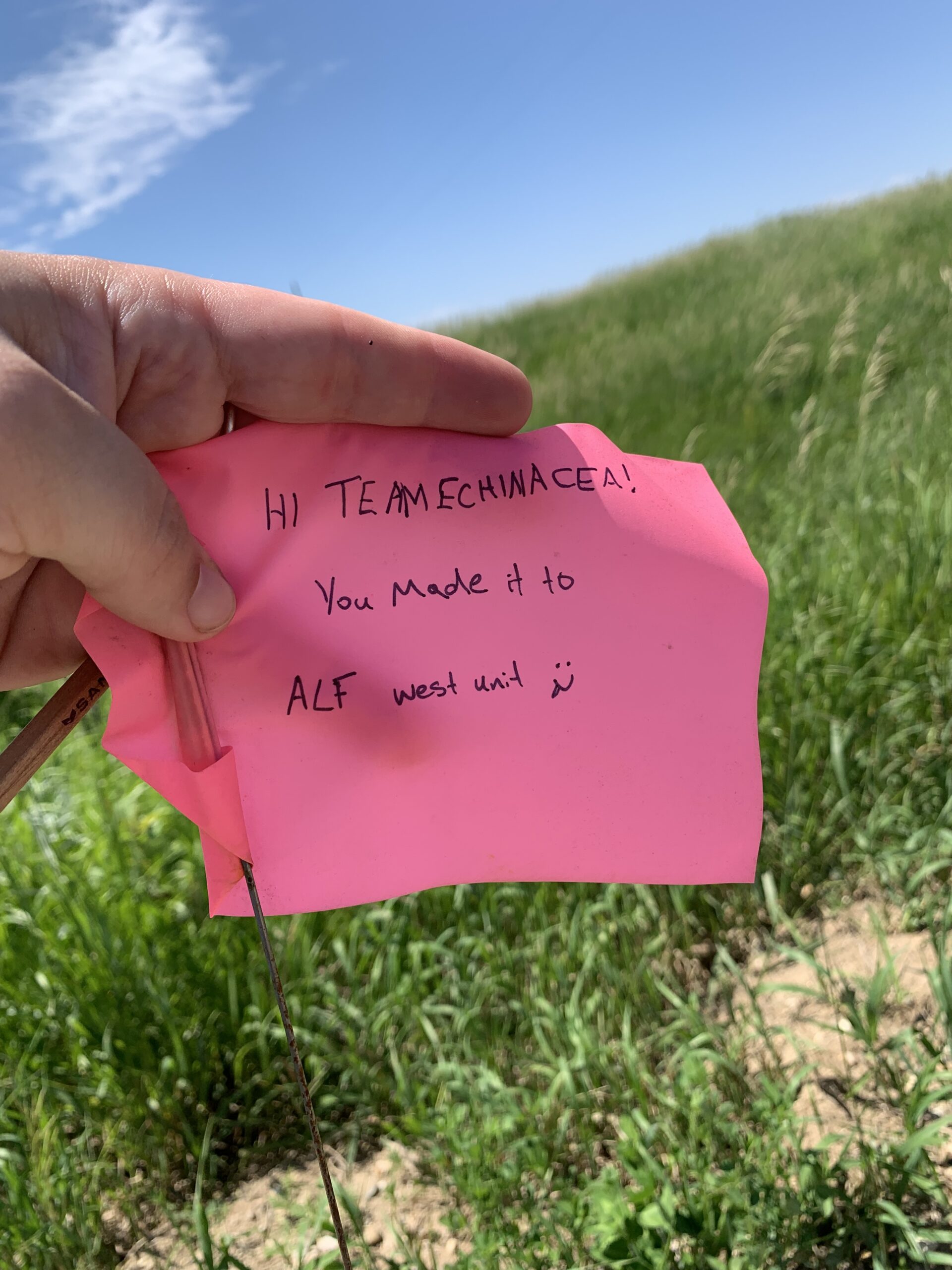 Hello everybody, My name is Liam Poitra and I am excited to be joing team echinacea for a second consecutive year. This summer I am hoping to deepen my knowledge further about the plant and animal interactions that make our prairies such dynamic ecosystems. For the first day with the whole team back, we spent the morning touring sites with Stuart and learning about common plants on the prairie. In the afternoon we worked as small groups setting out to remnants to familiarize ourselves the outcomes of burning on the prairie. Brittany, Ning, and I set out to observe 2 prairies 1 burned (yohw) and 1 unburned (loefflers corner). Yohw burned this spring was very short still all the plants were ankle height or lower and the soil was completely exposed without a thatch layer to cover it. However several plants showed great growth such as the heart shaped Alexander which seems to have already put out many leaves and was by far the plant to return the most vigorously at the site. Loefflers corner on the other hand showed plenty of brome and a thick thatch between plants. Both places seemed to have similar species however the forbs were easier to pick out at yohw |
||||
|
© 2025 The Echinacea Project - All Rights Reserved - Log in Powered by WordPress & Atahualpa |
||||

